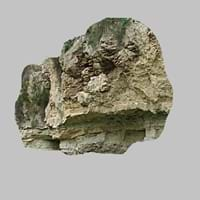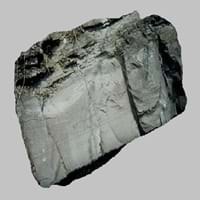Definition
A water-soluble mineral sediment resulting from concentration and crystallization by evaporation from an aqueous solution
A sedimentary rock, deposit of a submarine turbidity currents and are composed of layered particles
Origin
USA
European Foreland Basins
Discoverer
Usiglio
Arnold H. Bouma
Etymology
From a sediment left after the evaporation
From Medieval Latin turbiditas, from Latin turbidus (turbid). Turbidity current is from 1939
Class
Sedimentary Rocks
Sedimentary Rocks
Sub-Class
Durable Rock, Soft Rock
Durable Rock, Soft Rock
Group
Not Applicable
Not Applicable
Other Categories
Coarse Grained Rock, Fine Grained Rock, Medium Grained Rock, Opaque Rock
Coarse Grained Rock, Fine Grained Rock, Opaque Rock
Texture
Earthy
Mud-rich, Sandy
Color
Colourless, Green, Grey, Silver, White
Black, Brown, Colourless, Green, Grey, Pink
Durability
Durable
Durable
Appearance
Glassy, Vesicular and Foilated
Dull and Banded
Interior Uses
Decorative Aggregates, Entryways, Flooring, Homes, Interior Decoration
Bathrooms, Countertops, Decorative Aggregates, Flooring, Homes, Interior Decoration
Exterior Uses
As Building Stone, As Facing Stone, Garden Decoration, Paving Stone
As Building Stone, As Facing Stone, Paving Stone, Garden Decoration
Other Architectural Uses
Curbing
Curbing
Construction Industry
As a Flux in the Production of Steel and Pig Iron, As a Sintering Agent in Steel Industry to process Iron Ore, As Dimension Stone, Cement Manufacture, for Road Aggregate, Making natural cement, Manufacture of Magnesium and Dolomite Refractories
As Dimension Stone, Cement Manufacture, Construction Aggregate, for Road Aggregate, Making natural cement
Medical Industry
Taken as a Supplement for Calcium or Magnesium
Not Yet Used
Antiquity Uses
Artifacts
Artifacts, Monuments, Sculpture
Commercial Uses
Used in the manufacture of Ceramic Powder, Used in the preparation of Sulfuric Acid and Silicon Diborite
Cemetery Markers, Creating Artwork
Types
Not Available
Not Available
Features
Generally rough to touch, Splintery, Veined
High silica content, Host Rock for Lead
Archaeological Significance
Monuments
Not Yet Used
Used
Famous Monuments
Not Applicable
Data Not Available
Sculpture
Not Yet Used
Used
Famous Sculptures
Not Applicable
Data Not Available
Figurines
Not Yet Used
Used
Formation
Evaporite is water-soluble mineral sediment which forms from concentration and crystallization by evaporation from an aqueous solution.
Turbidite is a type of sedimentary rock formed when a river carries or transports pieces of broken rock as it flows. These particles then settle down and are subjected to high temperature and pressures hence forming Turbidite.
Mineral Content
Calcite, Cancrinite, Gypsum, Kyanite, Magnetite
Coesite, Quartz, Sand
Compound Content
CaMg(CO3)2, CaO, Calcium Sulfate, KCl, MgO, NaCl
CaO, Carbon Dioxide, MgO
Types of Metamorphism
Burial Metamorphism, Cataclastic Metamorphism, Contact Metamorphism, Impact Metamorphism, Regional Metamorphism
Not Applicable
Types of Weathering
Not Applicable
Biological Weathering, Chemical Weathering, Mechanical Weathering
Types of Erosion
Not Applicable
Chemical Erosion, Coastal Erosion, Sea Erosion, Water Erosion, Wind Erosion
Grain Size
Medium to Fine Coarse Grained
Fine to Coarse Grained
Fracture
Conchoidal
Splintery
Streak
White
White, Greenish White or Grey
Porosity
Less Porous
Very Less Porous
Luster
Subvitreous to Dull
Metallic
Cleavage
Perfect
Disjunctive
Toughness
Not Available
2.4
Specific Gravity
2.86-2.99
2.46-2.73
Transparency
Translucent
Opaque
Density
2.8-2.9 g/cm3
1.6-2.5 g/cm3
Resistance
Heat Resistant, Pressure Resistant
Heat Resistant
Deposits in Eastern Continents
Asia
Not Available
Not Yet Found
Africa
Not Available
Western Africa
Europe
United Kingdom
Austria, Belarus, Romania, Switzerland, United Kingdom
Others
Not Yet Found
Not Yet Found
Deposits in Western Continents
North America
USA
Canada, USA
South America
Colombia, Paraguay
Brazil, Colombia
Deposits in Oceania Continent
Australia
Central Australia, Western Australia
New Zealand, Western Australia
All about Evaporite and Turbidite Properties
Know all about Evaporite and Turbidite properties here. All properties of rocks are important as they define the type of rock and its application. Evaporite and Turbidite belong to Sedimentary Rocks.Texture of Evaporite is Earthy whereas that of Turbidite is Mud-rich, Sandy. Evaporite appears Glassy, Vesicular and Foilated and Turbidite appears Dull and Banded. The luster of Evaporite is subvitreous to dull while that of Turbidite is metallic. Evaporite is available in colourless, green, grey, silver, white colors whereas Turbidite is available in black, brown, colourless, green, grey, pink colors. The commercial uses of Evaporite are used in the manufacture of ceramic powder, used in the preparation of sulfuric acid and silicon diborite and that of Turbidite are cemetery markers, creating artwork.










